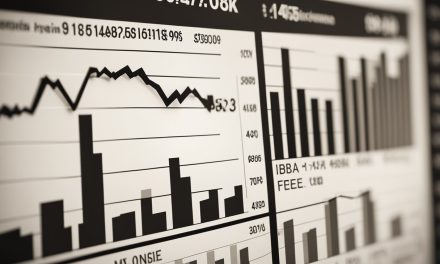Getting started in the world of investment can be an exciting yet daunting task for beginners. As you embark on this financial journey, it is essential to comprehend the differences between long-term and short-term investing. Long-term investing typically involves holding assets for several years, focusing on the steady growth of funds, while short-term investing aims to capitalize on short-term market fluctuations, with a duration ranging from a few days to months.
To succeed as an investor, it’s crucial to understand the fundamentals of stock market investment and develop an investment strategy that aligns with your financial goals and risk tolerance. A well-constructed portfolio is indispensable for effective wealth management, as it allows you to diversify your investments to minimize risk and maximize returns. Working with investment accounts, such as brokerage accounts or retirement accounts, provides the platform to manage and track your investments.
Key Takeaways
- Understanding the differences between long-term and short-term investing plays a vital role in creating an effective investment strategy.
- A diversified portfolio is crucial for mitigating risks and maximizing returns in both long-term and short-term investments.
- Using investment accounts, such as brokerage or retirement accounts, enables investors to manage, track, and adjust their investment portfolios as per their financial goals.
Understanding Long-Term vs Short-Term Investing
Defining Time Horizons
When preparing to invest, it’s essential to understand the differences between long-term and short-term investing. At its core, these terms refer to the length of time an investor holds a particular investment. Long-term investors typically maintain their investments for several years or even decades, allowing them to experience the benefits of compound growth and the smoothing out of market fluctuations. On the other hand, short-term investors hold their investments for shorter periods, like weeks or months, aiming to capitalize on smaller, more frequent market moves1.
Risk and Return Profiles
The investor’s time horizon directly influences their risk tolerance and return expectations. Long-term investing is generally considered less risky as it allows more time for the market to recover from potential downturns2. This approach often focuses on steady growth and value appreciation. Moreover, long-term investments have the advantage of benefiting from compound interest, which can lead to a significant increase in returns over time.
Short-term investing, however, tends to be more volatile and may expose the investor to higher risks3. These opportunities can bring higher returns, but they require more active management of the investment portfolio. It is important to note that short-term investing might incur more fees, such as transaction costs, which can negatively impact the overall return.
Setting Investment Goals
Both long-term and short-term investors should establish clear investment goals and take into consideration their unique financial circumstances and risk tolerance4. Long-term investors often focus on goals like retirement, funding education, or buying a home. Their investment strategies usually involve a diversified portfolio of various asset classes.
Short-term investors might have financial goals like saving for a down payment on a house or funding a small business. They are more likely to trade individual stocks, commodities, or engage in other speculative investments5.
In conclusion, it’s crucial to understand the differences between long-term and short-term investing, as well as their respective risk and return profiles, in order to align investment strategies with specific financial goals and personal circumstances.
Fundamentals of Stock Market Investing
Stocks and Bonds Basics
When getting started with stock market investing, it’s essential to understand the basics of stocks and bonds. Stocks represent partial ownership in a company, while bonds are fixed-income investments representing loans made to a company or government entity. Stocks have the potential for higher returns but also carry higher risk, whereas bonds typically provide more stable returns with lower risk.
A balanced investment portfolio often includes a mix of both stocks and bonds to optimize returns and minimize risk. You may also consider investing in index funds and exchange-traded funds (ETFs), which consist of a diversified group of stocks or bonds, providing exposure to a wide range of market sectors.
Understanding Market Volatility
Market volatility refers to fluctuations in stock prices and can significantly impact both short-term and long-term investments. It is essential for investors to understand market volatility and maintain a level-headed approach when investing.
Market volatility can stem from various factors, including economic events, geopolitical tensions, and investor sentiment. To mitigate the effects of volatility, investors can:
- Diversify their portfolios
- Maintain a long-term investment perspective
- Regularly review and rebalance their portfolios
The Role of Economic Indicators
Economic indicators play a significant role in the performance of stocks and bonds. They provide insights into the health of an economy and influence market demand and supply. Some common economic indicators include:
- Gross Domestic Product (GDP)
- Unemployment rate
- Inflation rate
- Consumer Price Index (CPI)
- Producer Price Index (PPI)
Monitoring economic indicators helps investors make informed decisions about their portfolios and can be valuable in identifying potential investment opportunities or warning signs. By understanding the fundamentals of stock market investing, both long-term and short-term investors can navigate the complexities of the market and maximize their returns.
Creating an Investment Strategy
Developing a Personal Investment Philosophy
It’s essential for investors to develop a personal investment philosophy that suits their individual goals and risk tolerance. This philosophy will guide investment decisions and help to create a roadmap for achieving financial objectives. For example, investors can focus on long-term growth or short-term gains, value or growth investing, or prioritize stocks with dividends. Establishing a solid investment philosophy will facilitate the selection of suitable investment strategies and decisions within the context of one’s unique circumstances.
Diversification and Asset Allocation
Diversification is a key aspect of any investment strategy, as it helps to spread and minimize risk across different asset classes. Investors should, therefore, allocate their investments among different asset classes like stocks, bonds, real estate, and cash. Within each class, further diversification is suggested by investing in various sectors, industries, and countries. The modern portfolio theory emphasizes constructing portfolios that maximize return for a specific level of risk, making diversification even more critical.
To achieve optimal diversification, consider the following asset allocation example:
Equity – 60%
- Stocks: 50%
- Large-cap: 30%
- Mid-cap: 10%
- Small-cap: 10%
- Exchange-traded funds (ETFs): 5%
- Mutual funds: 5%
Bonds – 30%
- Corporate bonds: 15%
- Government bonds: 15%
Other Asset Classes – 10%
- Real estate: 5%
- Cash or cash equivalents: 5%
Risk Management Techniques
Managing risk is crucial for both short-term and long-term investors, as it ensures that an investment plan can weather potential market fluctuations. Some effective risk management techniques include setting stop-loss orders, position sizing, and rebalancing the portfolio periodically.
Stop-loss orders automatically sell a security when it reaches a specified price, minimizing losses in a falling market. Position sizing involves determining the appropriate number of securities to purchase or sell, ensuring that an investor does not overexpose their portfolio to a single asset class, sector, or investment. Rebalancing is the practice of adjusting the weightings of assets in a portfolio, maintaining the desired ratio between asset classes as market conditions change. Regularly monitoring and adjusting the portfolio can help maintain a healthy balance between risk and return.
Building Your Portfolio
Selecting Investment Vehicles
When building a portfolio, it’s essential to choose the right investment vehicles based on your risk tolerance and financial goals. These vehicles can include stocks, ETFs, mutual funds, index funds, real estate, and other income-generating assets.
Stocks, ETFs, and Mutual Funds
Investors can choose between stocks, ETFs, and mutual funds as their primary investment vehicles. Stocks offer the potential for significant capital gains but can be more volatile. ETFs (Exchange-Traded Funds) track a specific index such as the S&P 500, providing diversification and lower risk. Mutual funds pool investors’ money to purchase a diversified set of assets, managed by an investment professional.
An alternative to buying individual stocks is fractional shares, which allow investors to purchase a portion of a stock or ETF for a lower cost. This allows for more diversified portfolios with smaller amounts of money.
Balancing Growth and Income Assets
When creating a balanced portfolio, it’s important to mix growth stocks with income assets.
Growth stocks are those with the potential for significant capital appreciation. These companies can be in emerging industries or have innovative products and services with high growth potential.
Income assets, on the other hand, include stable investments that generate regular income, such as dividend-paying stocks, real estate investment trusts (REITs), and bonds.
A well-balanced portfolio should include a mix of these assets, based on the investors’ risk tolerance and investment horizon. As investments grow over time, rebalancing the portfolio is essential to maintain the ideal mix of growth and income assets.
Working with Investment Accounts
Brokerage Accounts and Brokers
When starting to trade, you need to choose the right type of account. One common choice for both long-term and short-term investors is a brokerage account. This type of account allows you to buy and sell securities like stocks, bonds, and funds. To access the financial markets, you will need to open such an account through a trusted broker. Brokers serve as intermediaries between investors and the market by facilitating transactions.
There are several types of brokers, some of which offer additional services like research, advice, or personalized management. The key is to choose a broker that best suits your needs and consider factors such as commission fees, trading platforms, and account minimums.
Retirement Accounts: 401(k)s and IRAs
For long-term investors, retirement accounts like 401(k)s and Individual Retirement Accounts (IRAs) are popular choices due to their potential tax advantages. Employer-sponsored retirement accounts come in two main types: the traditional 401(k) and the Roth 401(k).
- A traditional 401(k) allows you to contribute pre-tax dollars, which can help decrease your taxable income. Taxes are only applied when you start withdrawing funds during retirement.
- A Roth 401(k) has the opposite tax treatment. Contributions are made after taxes, but your withdrawals during retirement are generally tax-free.
Individual Retirement Accounts (IRAs) come in two types: traditional and Roth IRAs. The main difference between them lies in their tax treatments:
- Traditional IRA: The contributions are potentially tax-deductible depending on your income level. Taxes are paid upon withdrawal in retirement.
- Roth IRA: The contributions are made with after-tax dollars, while qualified withdrawals are tax-free at retirement.
Each type of account has its unique benefits and limitations, which one should consider carefully before choosing the most suitable retirement investing strategy.
Tax Considerations and Benefits
Both long-term and short-term investors need to be aware of taxes associated with their investment activities. When trading in a brokerage account, any profit from selling an asset is subjected to capital gains tax. The rate depends on the holding period:
- Short-term capital gains tax: If an investment is held for one year or less, it is considered short-term, and any gains are taxed at the investor’s ordinary income tax rate.
- Long-term capital gains tax: If an investment is held for more than one year, it is considered long-term, and gains are taxed at a lower rate, generally 0%, 15%, or 20%, depending on the investor’s tax bracket.
Retirement accounts, on the other hand, offer tax-deferred or tax-free growth potential. This allows your investments to compound over time, which can significantly improve your retirement savings.
Investment Practices for Long-Term Investors
Focus on Buy-and-Hold Strategies
For long-term investing, one of the most popular and effective strategies is the buy-and-hold approach. This involves purchasing investments, like stocks or bonds, and holding on to them for an extended period, allowing the assets to grow over time. This strategy requires patience and a consistent commitment to the chosen investments, even during market fluctuations. Investors can benefit from professional advice to create a well-diversified investment portfolio, which can help mitigate risks and provide a more steady growth rate.
Benefits of Compound Interest
Compound interest is a powerful force that can significantly contribute to the success of long-term investments. Essentially, it is the interest earned on both the principal amount and any accumulated interest. The compounding effect increases over time, as the interest earned is continually reinvested.
Here’s a simple example – if you invest $1,000 at a 5% annual interest rate:
| Year | Principal | Interest | Total |
|---|---|---|---|
| 1 | $1,000 | $50 | $1,050 |
| 2 | $1,050 | $52.50 | $1,102.50 |
| 3 | $1,102.50 | $55.13 | $1,157.63 |
As you can see, the interest earned in each year gets added to the principal, which then earns interest in subsequent years. The benefits of compound interest can greatly enhance long-term investment returns.
Investing for Retirement and Major Goals
Long-term investors often have specific financial goals in mind, such as saving for retirement or major life events like purchasing a home. In these cases, building an investment portfolio that targets these goals is crucial. Including a mix of assets such as stocks, bonds, and cash equivalents can provide the necessary growth potential while maintaining a balanced risk profile.
Working with a professional financial advisor can further optimize a long-term investor’s portfolio, ensuring that the chosen investments align with their objectives and risk tolerance. Regular monitoring and adjustments to the portfolio can help keep it on track to achieve its goals, while continually improving the investor’s market knowledge and experience.
Approaches to Short-Term Trading
Short-term trading is a popular strategy among investors, focusing on trades with a time frame ranging from seconds to a few days or weeks. This section discusses various approaches to short-term trading, distinguishing between day trading and swing trading, analyzing short-term market fluctuations, and leveraging technical analysis.
Day Trading vs Swing Trading
Day trading and swing trading are two common methods for short-term trading. While day trading involves buying and selling securities within the same trading day, swing trading typically spans over several days or weeks.
Day traders capitalize on opportunities presenting themselves during the trading day, such as price volatility and market trends. They usually close all their positions before the market closes, avoiding possible overnight risks. Day trading requires a high level of liquidity to quickly enter and exit positions.
On the other hand, swing traders take advantage of short-term market fluctuations to reap profits over several days or weeks. They consider both technical analysis and some fundamental factors to identify opportunities.
Analyzing Short-Term Market Fluctuations
To stay ahead in short-term trading, investors closely monitor market fluctuations that can affect their investment decisions. Here’s a list of common factors influencing short-term market movements:
- Economic data releases: Employment data, GDP figures, and interest rate decisions
- Earnings reports: Company-specific announcements, such as profitability margins and sales figures
- Market sentiment: The dynamics of fear and greed dominating the market
- Political events: Elections, policy changes, or any unexpected geopolitical situations
Understanding these factors and their implications on the market can help short-term traders make informed decisions.
Leveraging Technical Analysis
Another crucial aspect of short-term trading is leveraging technical analysis. It involves using historical price data and various charting techniques to predict future price movements. Here are a few popular tools used in technical analysis:
- Moving averages: Display the average price of a security over a specific time frame, smoothing out the price fluctuations
- Trend lines: Identify the direction of a trend by connecting support or resistance levels
- Volume: Analyzes the number of shares traded during a specific time frame
- Indicators: RSI (Relative Strength Index), MACD (Moving Average Convergence Divergence), and Bollinger Bands, among others, to evaluate momentum, trends, and volatility
Short-term traders should be proficient in spotting patterns and using technical analysis tools to gauge potential price movements and make timely decisions.
Evaluating and Adjusting Your Portfolio
Regular Monitoring and Rebalancing
It is essential for both long and short term investors to regularly monitor and rebalance their portfolio. This involves assessing how your investments are performing and adjusting them to maintain your desired level of risk and potential returns. A common practice is to review your portfolio at least once a year or quarterly.
Here are some key steps for monitoring and rebalancing:
- Evaluate your current asset allocation – Determine which assets are overperforming or underperforming in your portfolio.
- Compare with your target allocation – Understand how your current asset allocation diverges from your original target allocations.
- Rebalance as needed – Shift your investments to bring your allocation back in line with your target allocation.
Remember to take into account your own personal finance goals and risk tolerance when making adjustments to your portfolio.
Responding to Market Changes
Being adaptive and responsive to market changes is crucial in maintaining the health of your investment portfolio. During a bear market, it may be necessary to shift your investments more conservatively to protect your assets from significant losses. On the other hand, during a bullish market, you may want to take advantage of growth opportunities.
One important factor to consider when responding to market changes is inflation. It can erode the purchasing power of your investments, so plan accordingly to protect your wealth in the long run. This might involve investing in assets that are more resistant to inflation, such as real estate or commodities.
The Importance of an Emergency Fund
Establishing an emergency fund is an essential aspect of personal finance that should not be overlooked when evaluating and adjusting your portfolio. An emergency fund serves as a safety net in times of unexpected financial needs, such as job loss, medical expenses, or home repairs.
Here are some guidelines for creating and maintaining an emergency fund:
- Aim for at least 3 to 6 months’ worth of living expenses
- Keep the funds in a separate, easily accessible account
- Regularly review and adjust the amount in your emergency fund as your financial situation and goals evolve
Having an emergency fund in place can provide a buffer against market downside risks, helping to prevent the need to sell investments at a loss during difficult times.
By incorporating these practices into your investment strategy, you can effectively evaluate and adjust your portfolio to better align with your financial goals and navigate the complexities of the market.
Additional Considerations for Investors
Using Robo-Advisors and Financial Planners
For those new to investing, seeking the help of professionals can be beneficial. Robo-advisors and financial planners serve different purposes but can complement each other in building a well-rounded investment strategy. Robo-advisors use algorithms to automatically manage investment portfolios based on an investor’s risk tolerance, goals, and other personal factors. This option is often cost-effective and low-maintenance, making it an attractive choice for beginners or those with smaller investment amounts.
On the other hand, financial advisors offer personalized guidance and support in various aspects of personal finance, including investment planning, retirement planning, and tax strategies. They can provide tailored advice for both short-term and long-term investments. Some popular financial planning organizations include Vanguard and Fidelity.
The Impact of Institutional Investors
It’s crucial to understand the role that institutional investors, such as mutual funds, pension funds, and insurance companies, play in the financial markets. These organizations typically manage more extensive portfolios and have access to resources and information that individual investors might not have. Their trading activities can significantly impact market prices and trends, especially in the short term. Awareness of institutional investors’ moves can help individuals calibrate their investment strategies accordingly.
Investment and Personal Finance Resources
Access to reliable resources for investment and personal finance knowledge is essential for anyone looking to succeed in the markets. Some useful resources include:
- Books: There are numerous informative books covering various aspects of investing. Classics such as “The Intelligent Investor” by Benjamin Graham and “A Random Walk Down Wall Street” by Burton G. Malkiel are excellent primers for new investors.
- Podcasts: Listening to podcasts is a convenient way to gain insights on personal finance and investment topics. Some popular choices include “The Indicator from Planet Money” and “Marketplace.”
- Online websites and forums: Several reputable websites offer valuable financial information and insights. Examples include Investopedia, Seeking Alpha, and the finance subreddits such as r/investing and r/personalfinance.
- Calculators: Many personal finance websites offer free calculators to help investors understand their financial goals, risk tolerance, and potential returns. Using these tools can aid prospective investors in making informed decisions.
By leveraging these resources and incorporating the expertise of professionals, investors can make the most informed decisions possible for both short-term and long-term objectives.
The Bottom Line in Investing
When it comes to investing, understanding your goals and risk tolerance is essential for crafting a successful investment strategy. Both short-term and long-term investors can profit from the market, but they require different approaches to ensure a profitable trade and achieve their financial goals.
Short-term investors, such as day traders, often capitalize on market volatility by making frequent trades on securities that experience significant price fluctuations. These investors rely on technical analysis and other tools to predict short-term price movements and make swift decisions to maximize their gains. However, short-term investing also exposes investors to higher risks and fees. As the Wall Street Oasis explains, you need to be mindful of these factors when considering short-term investments.
On the other hand, long-term investing involves buying and holding assets for an extended period, often looking at the long-term growth potential of a company. The idea is to harness the power of compounding and gradually increase wealth over time. This approach generally requires:
- Diversification of assets to spread risk.
- Patience and discipline to withstand market fluctuations.
- A focus on value rather than short-term gains.
In the long run, long-term investors tend to enjoy the benefits of lower fees, reduced tax implications, and more stable returns. This strategy aligns well with investors who prioritize financial security and growth over instant gains.
Ultimately, the bottom line in investing comes down to understanding your unique objectives and constraints. There is no one-size-fits-all strategy, and the best approach for you may lie somewhere in between short-term and long-term investing. It is crucial to continually refine your investment plan based on your changing financial needs and market conditions. A disciplined and well-informed investor stands the best chance of achieving success on Wall Street and beyond.
Frequently Asked Questions
What are the main differences between long-term investing and short-term trading?
Long-term investing involves holding assets for a year or more, often for 5-10+ years, with an expectation of a gradual increase in value over time. In contrast, short-term trading, such as day trading, can involve holding assets for a few weeks or even just a day, seeking quick profits from relatively minor changes in market conditions 1.
Which platforms are recommended for beginners to start day trading?
For beginners, it’s essential to choose an online brokerage platform that offers a user-friendly interface, low fees, and excellent customer support. Some popular platforms for beginners include Robinhood, E*TRADE, and TD Ameritrade. Always research and compare platforms before choosing the one that suits your needs best.
What strategies should short-term traders employ for maximum profitability?
Some effective short-term trading strategies include scalping, momentum trading, and news trading. Scalping involves profiting from small price movements, momentum trading capitalizes on strong price movements, and news trading is based on reacting to significant market news, such as earnings reports or economic events. Developing a strategy that suits your trading style and risk tolerance is essential 2.
What should new investors know about the various markets and their suitability for different trading styles?
Different markets, such as stocks, bonds, commodities, and forex, provide varying opportunities and risks for traders. Stock trading is often recommended for beginners, as it is more accessible and offers a variety of investment options. Forex trading can be more suitable for experienced traders, as it requires a deeper understanding of various global currencies and economic factors. In contrast, commodity trading typically involves understanding supply and demand factors that impact prices. Familiarize yourself with each market’s unique features before investing.
How much initial capital is advisable for a rookie trader to begin with?
The amount of initial capital varies depending on the investor’s financial situation and risk tolerance. It is advisable to start with a modest amount that you can afford to lose, as inexperienced traders may face losses early on. As you gain knowledge and experience, you can increase your capital accordingly. Remember, investing in any market carries risk, and there are no guarantees of profits.
Is it possible to combine long and short positions in a single portfolio, and what are the implications?
Yes, it is possible to combine long and short positions in a single portfolio, which can help diversify and hedge risks associated with market fluctuations. Long positions represent an expectation of price increases, while short positions anticipate price declines. Balancing these positions can help you navigate various market conditions and reduce the impact of market downturns on your overall portfolio value. However, it is essential to monitor and adjust your positions regularly, as changes in market conditions may require shifts in strategy or asset allocation.
Conclusion
In summary, getting started in trading for both long and short term investors requires a solid understanding of the investment strategies, and the discipline to stick to them.
Firstly, long-term investing involves buying and holding securities with the expectation that they will appreciate in value over an extended period of time. Some advantages of long-term investing include lower trading fees, taxes, and other costs, which can increase returns over the long run. However, it requires patience and a thorough understanding of the company or sector in which you are investing.
On the other hand, short-term trading aims to capitalize on momentary market fluctuations by buying and selling securities within a shorter timeframe. This method can yield higher gains in a shorter period, but also comes with higher risks and transaction costs.
To start trading, consider the following steps:
- Choose your trading strategy: long-term investing or short-term trading.
- Conduct thorough research on the chosen strategy, and learn about the risks and potential rewards associated with it.
- Open an account with a reputable brokerage firm, such as Robinhood or Webull, for executing trades.
- Develop a trading plan, outlining your goals, risk tolerance, and preferred investment instruments.
- Stay disciplined and adhere to your plan, even during periods of market volatility.
Remember, the key to success in trading is to have a well-thought-out plan and the discipline to stick to it, regardless of the strategy you choose. Always keep learning and stay informed about the markets to increase your chances of success.









Recent Comments